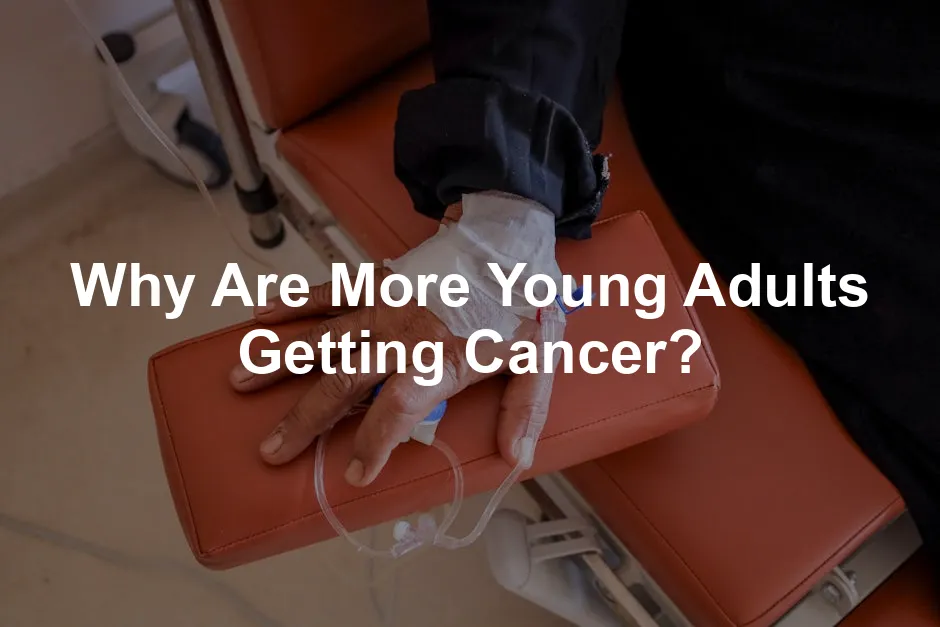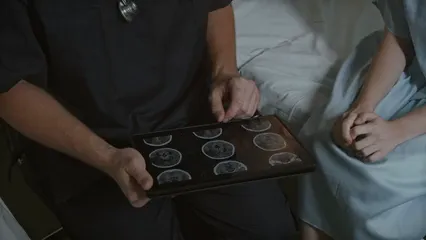
Why Are More Young Adults Getting Cancer?
Introduction
More young adults under 50 are receiving cancer diagnoses. This rising trend is alarming and deserves our attention. Understanding why this is happening is vital for public health. Awareness and early detection are crucial to fighting this disease effectively.
For those looking to understand the human side of cancer, I highly recommend “The Immortal Life of Henrietta Lacks” by Rebecca Skloot. It’s a remarkable account that weaves together the story of a woman whose cells changed medical research forever, while also exploring the ethical dilemmas of medical science.
Summary and Overview
Statistics show a significant increase in early-onset cancers globally. Research indicates a projected rise of 30% in cases by 2030. This trend impacts society and healthcare systems, as younger individuals face unique challenges. Common cancers in this age group include breast, colorectal, and pancreatic cancers. Further research is essential to uncover causes and develop preventive measures.

If you’re looking for a compelling read that dives deep into cancer’s history, check out “The Emperor of All Maladies: A Biography of Cancer” by Siddhartha Mukherjee. This book is not just a biography of cancer; it’s a biography of humanity’s struggle against the disease.
The Rise of Early-Onset Cancers
Overview of Statistics
Recent studies highlight a troubling rise in early-onset cancers among young adults. Data from the American Cancer Society shows a 1-2% annual increase in cases for adults under 50. By 2030, experts predict a staggering 30% increase in early-onset cancer diagnoses. Notably, colorectal cancer rates have nearly doubled since the 1990s. Breast cancer, particularly among women, is rising by 4% per year.
The demographic shift is evident, with the most affected age group being those in their 30s. In contrast, cancer rates among older adults have decreased. This rising incidence among younger populations not only reflects changing health dynamics but poses significant challenges for healthcare systems globally.

Factors Contributing to Increased Cancer Rates
Lifestyle Factors
Many young adults today face a growing cancer risk due to lifestyle choices. Obesity is a significant issue, with nearly 40% of U.S. adults under 40 classified as obese. This condition links to various cancers, including colorectal and breast cancer. A diet high in processed foods and sugars is a leading contributor to obesity. Research shows that diets rich in red and processed meats, alongside low fruit and vegetable intake, increase cancer risk.
Physical inactivity also plays a role. Many young people have sedentary lifestyles, which can lead to weight gain and higher cancer chances. Alcohol consumption is another factor to consider. Regularly drinking excessive amounts raises the risk of several cancers, such as liver and breast cancer. Understanding the impact of physical activity can help in addressing these risks.

To kickstart healthier habits, consider incorporating tools like a fitness tracker into your routine. It can be a game changer, motivating you to move more and stay active.
Physical activity is crucial for maintaining a healthy weight and reducing cancer risk. Why do we notice more pins and needles sensations during physical activity can provide insights into the importance of staying active.
Surveys indicate that many young adults are unaware of the direct correlation between these lifestyle factors and cancer rates. Making healthier choices can significantly reduce these risks.

Environmental Influences
Environmental factors are becoming increasingly recognized as contributors to rising cancer rates among young adults. Pollutants and chemicals in our surroundings pose serious threats. Studies show that exposure to air and water pollutants can increase cancer risk. For instance, chemicals found in plastics and pesticides may lead to hormonal changes that promote tumor growth.
The gut microbiome, which influences overall health, is also affected by environmental factors. A disrupted microbiome, often linked to processed food consumption and antibiotics, may increase cancer susceptibility. Research is ongoing to understand how these gut changes relate to cancer development.
In addition, social determinants of health, such as access to clean air and healthy food, significantly impact cancer rates. Disparities in these areas mean that some groups are at higher risk than others. Addressing these environmental influences is critical in combating the rise of early-onset cancers.

Genetic and Familial Factors
Genetics and family history play a crucial role in the increasing cancer rates among young adults. Understanding your family’s medical history can provide insights into your health risks. If a close relative had cancer, your likelihood of developing a similar condition rises. For example, hereditary cancer syndromes, like BRCA mutations, significantly heighten the risk of breast and ovarian cancers. Current statistics indicate that about 5-10% of all cancers are linked to inherited genetic mutations.
Genetic testing can be a game changer for risk assessment. By identifying specific mutations, individuals can take proactive measures. This may include increased surveillance or preventive surgeries. If you have a family history of certain cancers, discussing genetic testing with your doctor is wise. Early detection can lead to more effective treatments and better outcomes.

Awareness of these genetic factors is essential. As more young adults gain knowledge about their family histories, they can make informed health decisions. Understanding your genetic predispositions empowers you to take control of your health journey. For more information on genetic factors, you can read about why do genetic factors influence wrinkle development and prevention.
Access to Care and Screening Challenges
Many young adults face significant barriers to timely cancer diagnosis and treatment. Healthcare access is often limited, leading to late-stage diagnoses. Disparities in healthcare access can result from factors like insurance coverage, income, and geographic location. For instance, rural areas may lack specialized healthcare providers. This can delay necessary screenings and treatments.
Awareness of cancer symptoms is crucial. Young adults might dismiss persistent symptoms due to their age, thinking they’re too young for serious illness. This mindset can prevent timely medical consultations. For example, colorectal cancer screenings usually start at age 45. However, individuals with a family history may require earlier screenings.

Statistics show that only about 61% of eligible individuals receive colorectal screenings. Moreover, disparities are evident, with screening rates being lower among minorities and those with lower income. This lack of awareness and access can contribute to the increasing incidence of cancer among younger adults. Early detection plays a critical role in improving outcomes, making it essential to address these challenges head-on.
Prevention and Awareness Strategies
Lifestyle modifications can significantly reduce cancer risk for young adults. A balanced diet rich in fruits, vegetables, and whole grains is essential. Limiting processed foods and red meat can also help. Regular physical activity is vital; aim for at least 150 minutes of moderate exercise each week. This not only aids in maintaining a healthy weight but also boosts overall well-being.

Avoiding harmful substances is equally important. Smoking and excessive alcohol consumption are major risk factors for various cancers. If you smoke, seeking resources to quit can be life-changing. Community resources, such as local fitness classes or nutrition workshops, can offer support for healthy living.
To help you on your journey, consider a subscription to a healthy snack box. It’s a fun way to try new nutritious foods while ensuring you’re making healthier choices.

Recent studies indicate that lifestyle changes can lower cancer risk by up to 40%. By adopting healthier habits, young adults can take control of their health. Awareness campaigns focusing on prevention strategies can empower individuals to make informed decisions. Together, we can foster a healthier future and combat the rising trend of cancer among young adults.
Importance of Regular Screenings
Awareness about cancer symptoms is essential, especially for young adults. Many may not realize they can develop cancer at a young age. Regular check-ups can catch issues early, improving outcomes significantly.
Updated screening guidelines are crucial for this age group. For example, colorectal cancer screenings now start at age 45, down from 50. This change reflects rising cases in younger people. Women should also begin mammograms at age 40 to catch breast cancer early.

Patient education is vital. Knowing common symptoms, such as unexplained weight loss or persistent fatigue, can lead to timely medical consultations. Studies show that early detection through screening can improve survival rates by up to 90%.
Overall, prioritizing regular screenings and understanding symptoms can empower young adults to take charge of their health. Early action is key to combating the rising trend of cancer diagnoses in this demographic.
Conclusion
Recognizing the increase in cancer rates among young adults is crucial. Awareness and proactive health measures can help combat this alarming trend. We need to advocate for ongoing research and tailored resources for younger populations facing cancer. Together, we can work towards reducing these rising rates and fostering a healthier future for all.
If you’re looking for some inspiring reads, consider “Being Mortal: Medicine and What Matters in the End” by Atul Gawande, which beautifully discusses the importance of understanding life and death in our healthcare system.
Please let us know what you think about our content by leaving a comment down below!
Thank you for reading till here 🙂
All images from Pexels




